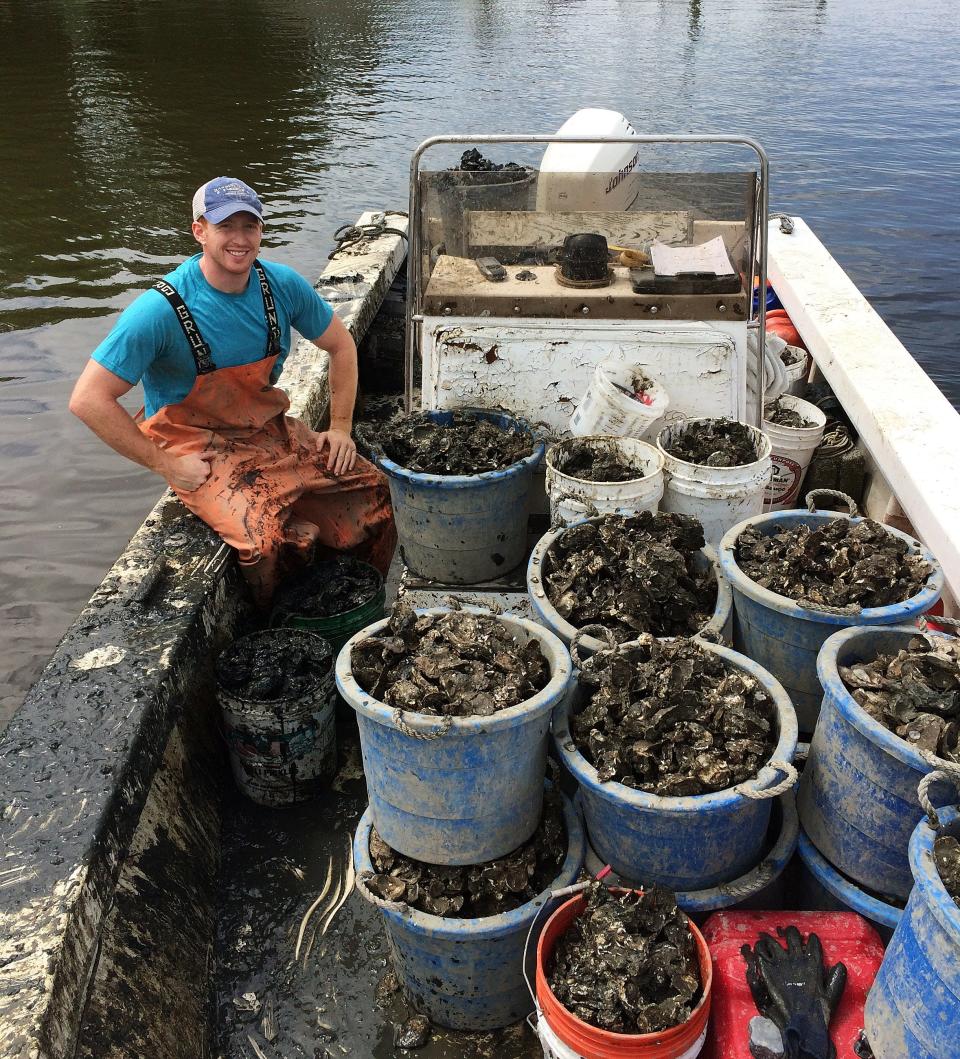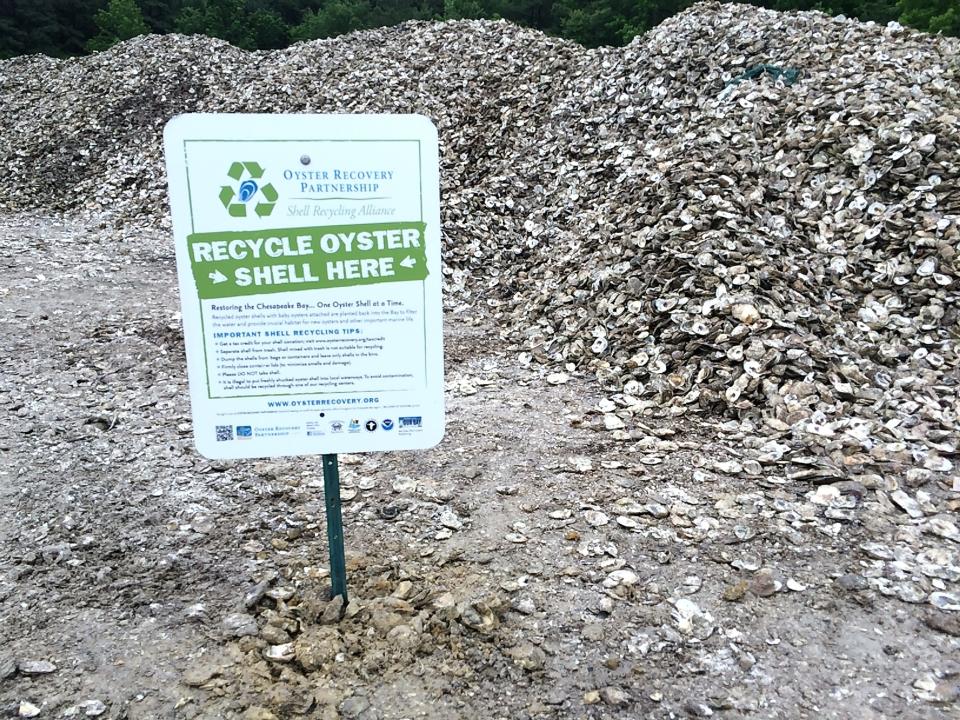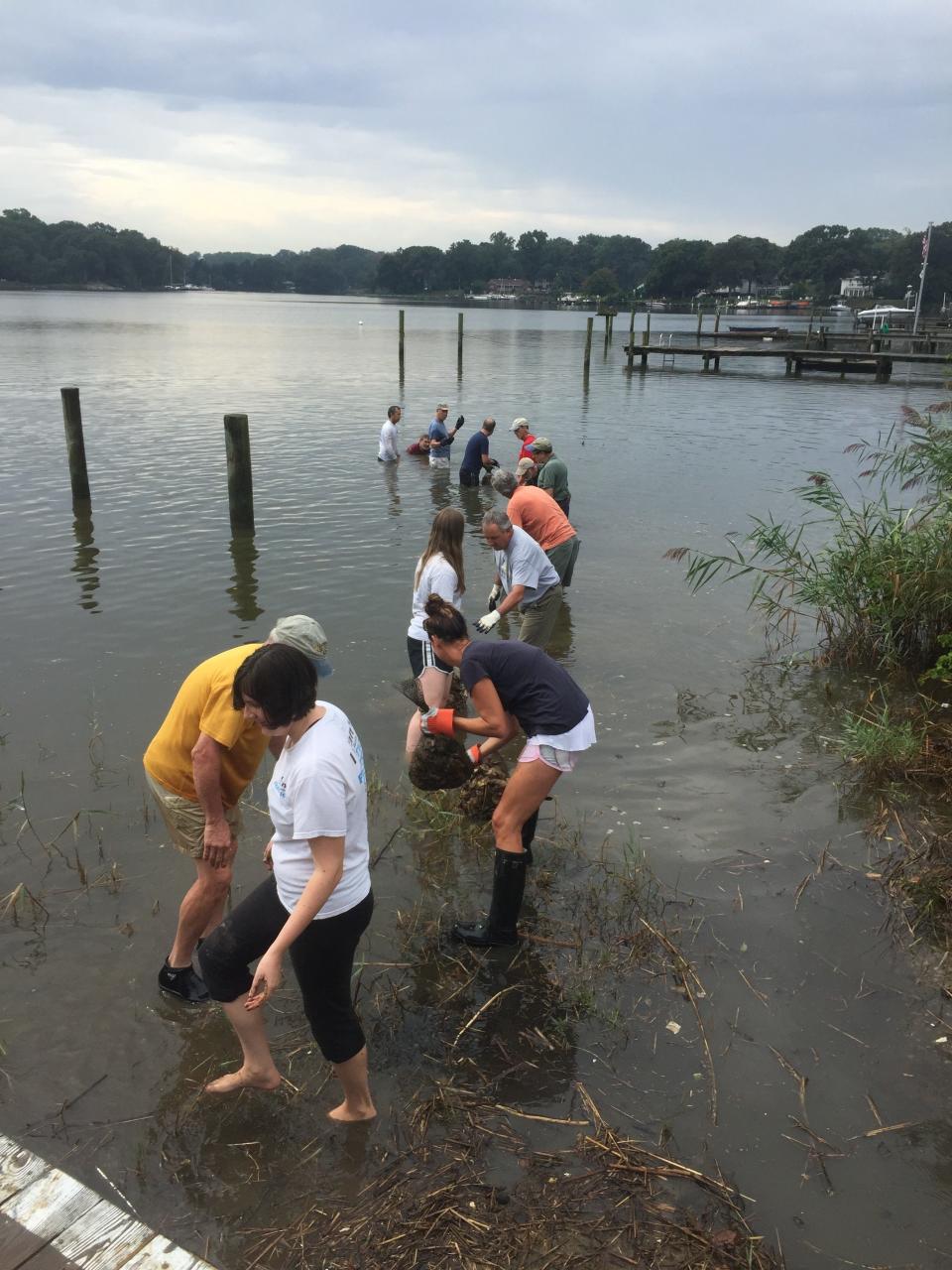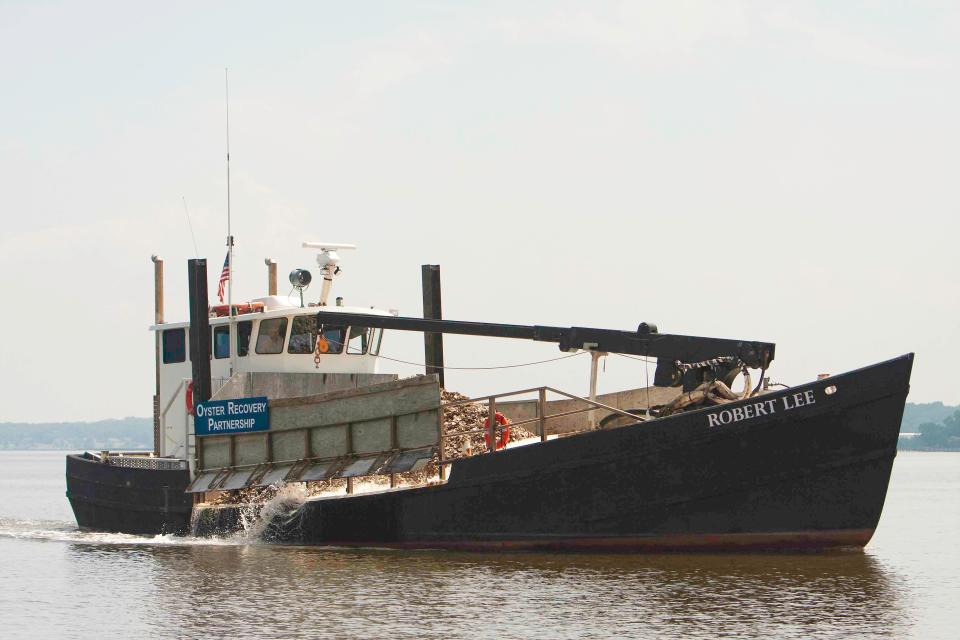Oyster restoration efforts at new heights on Chesapeake Bay, with these groups leading way
As oysters continue to rebound in the Chesapeake Bay and its tributaries, the Oyster Restoration Partnership has not taken its foot off the gas to achieve new milestones.
A mission that started in 1994 to ensure a clean Bay has grown to include a bevy of local and state partnerships. To date, that has translated into over 1 billion oysters being replanted, with 99% of the created habitats going on to be successful.
Oyster shell recycling programs and public education on the vital role of the bivalves in the Bay and its tributaries remain paramount components of the organization's work. Its impact is already being seen as the Maryland Watermen's Association notes this past harvesting season exceeded expectations.
"Oysters play a key role as a habitat forming species for fish and crabs to name just some," said Olivia Caretti, Coastal Restoration Program Manager for the organization. "They are filter feeders that filter particles and algae out of the water and reduce nutrients and improve water quality and clarity. That benefits other organisms like underwater vegetation. They're also a huge economic component of the watermen industry."

According to partnership data, since 1998, it has planted more than 9 billion juvenile oysters on 3,000 acres of permanently restored sanctuaries, areas protected by state law and where harvesting cannot occur.
Sanctuary reefs have the best chance of forming the natural, three-dimensional structures that provide habitat for Chesapeake Bay marine life and ecosystem services such as water quality improvement. To identify the areas that will have the greatest likelihood of success, the National Oceanic and Atmospheric Administration Chesapeake Bay Office maps areas using sonar technology.
The team also uses “ground-truthing” and visual inspection techniques like bottom mapping, tonging and SCUBA diver surveys on historic oyster bars.
"The upper watershed of the Bay is the location for a concentration of agriculture, so there's a great deal of nutrient and sediment runoff. There's also issues with land use management along the Bay with development that can also harm oysters and there were years of a lack of harvesting regulations," Carretti said.
More on rebounding oyster numbers Oyster harvest rebounds in Bay and its waters, and here's what's driving recovery
Caretti credits the Maryland Department of Natural Resources for revising its policies to stem overharvesting and manage the current supply of the oysters.
The source of the science

For the organization, the oyster industry is more than a financial boon for the state, especially the Eastern Shore. Watermen are the first to see if their restoration efforts are paying off. Even the public has a role to play, with locations in Grasonville and Cambridge for them to dump used oyster shells today that will be the foundation for beds tomorrow.
"Watermen are out there every day and know the restoration system very well. We rely on their expertise to guide our scientific programs and we partner with them. Maryland DNR and Virginia Marine Resource Commission have done a great job updating their management plans and working with industry," Caretti said.
Even through small-scale oyster sanctuary work with local entities, the organization focuses on community relations.
Replenishing harvest areas, improving sustainable fishing practices, and working with small-scale community groups to get them working with oysters is the three-pronged approach to the mission.

Each year, the partnership participates in dozens of community events and festivals, whether its collecting and recycling oyster shells for future restoration projects, staffing an educational information table or simply entertaining event attendees with the jolly mascot oyster named Shelly.
The fun approach to education underscores the importance of science-driven conservation and the delicate balance between industry and environmentalism.
More on conservation at the state level Maryland Gov. Wes Moore doubles down on Chesapeake Bay conservation efforts
"It's an important time for Bay health"

Programs like Marylanders Growing Oysters, an initiative started by the partnership, represents the necessary involvement by the public for future success.
Through the work of an estimated 1,500 volunteers, young oysters are planted in sanctuaries to enrich tributary ecosystems. The ideal participants would have:
an existing pier or wharf with at least four feet of water at low tide in one of the tributaries selected for the program, including creeks, coves, and inlets;
the willingness to provide maintenance for up to four cages of oysters up to 12 months;
and an interest in the welfare of the Chesapeake Bay and becoming an oyster steward.
"It takes a long time to build partnerships and it takes years of building trust and relationships. We want to work with a variety of organizations and individuals to make sure their goals are successful and develop them together. Over the past 30 years, we've done that within the oyster space," Caretti said.
More on the EPA and the Bay EPA lawsuit on Chesapeake Bay tentatively settled, with Pennsylvania taking heat
This article originally appeared on Salisbury Daily Times: How oyster restoration efforts are at new heights on Chesapeake Bay

